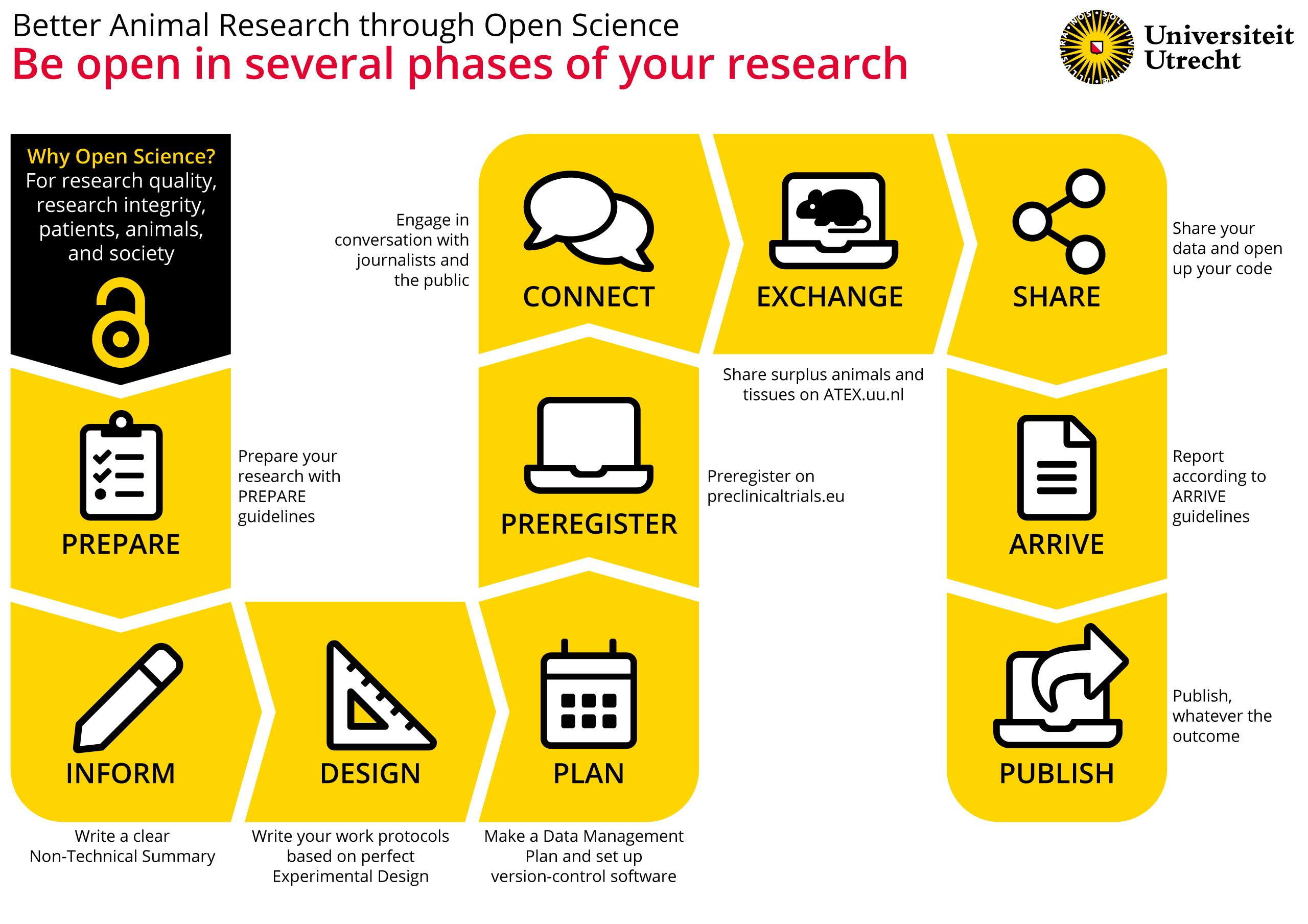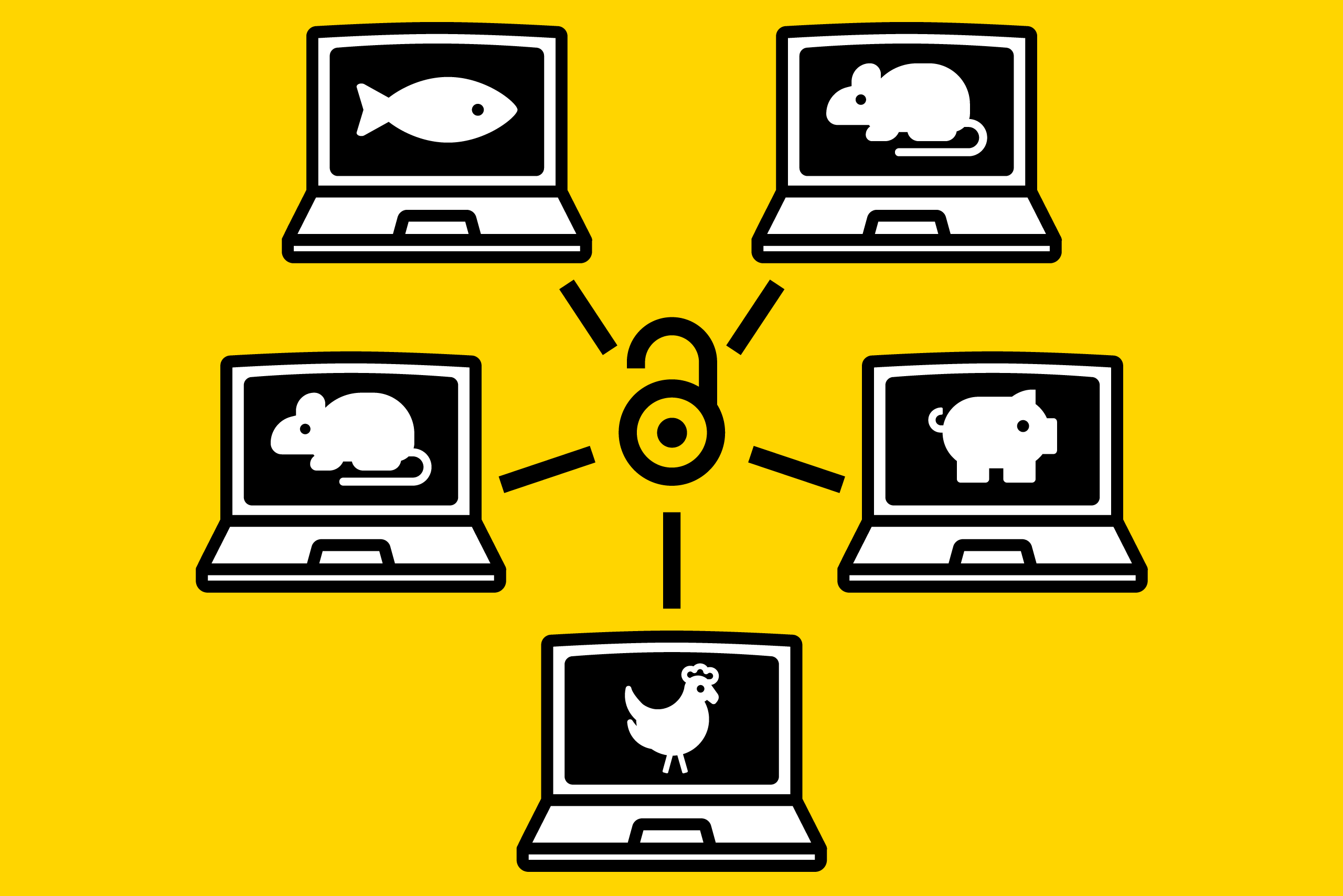Better animal research through Open Science
4 years agoOn October 26, 2021, the online symposium Better Animal Research through Open Science took place at Utrecht University. The added value of Open Science for animal experiments was discussed. Openness about methods, data and outcomes can lead to more reliable, efficient and relevant research using fewer laboratory animals.
Why Open Science? Frank Miedema, professor of Open Science at Utrecht University, kicked off with an honest look back at the animal experiments he himself conducted in the past. Thousands of mice were used in the research he was involved in, but the experimental design was far from perfect. He indicated that he was pleased that we are now taking a much more critical look at animal experimentation. Open Science is a way to improve things even further. Research with this approach is responsible, conscious and critical, and you are open to feedback. It is not always easy to apply Open Science, but much progress has been made and is already being made.
The role of ZonMw as a financier
After this introduction, Jeroen Geurts, chairman of ZonMw, spoke about the stimulating role of financiers. For example, ZonMw helps to fund systematic reviews and the publication of negative or neutral results of research. ZonMw also helps to make research data FAIR (Findable, Accessible, Interoperable and Reusable). This ensures that data can be better distributed and shared, so that other researchers can reuse the data. ZonMw hopes that stimulating Open Science will ensure that research is not unnecessarily repeated. This also prevents unnecessary use of laboratory animals.
Open Science in all stages of research
This was followed by short presentations on various topics in the order of the steps that a research project goes through.
Adrian Smith, secretary of the Norwegian 3R platform Norecopa, briefly talked about the PREPARE guideline, a way to prepare animal experiments in a structured way, in order to guarantee basic quality. Because if your cake recipe isn't right, your cake is doomed to fail.
Monique Janssens, communication advisor at the Utrecht Animal Welfare Authority, gave tips for writing the non-technical summary (NTS). After some technical points of interest, she concluded with a handy tip: call an acquaintance – a non-scientist – and tell them about your research. Write down the common words you use.

Click on the image to download or click here for the PDF (print)
Ivo Tiebosch, laboratory animal expert at the Utrecht Animal Welfare Body, started his presentation on the course My Animal Research – Experimental Design with critical media reports about animal experimentation. In the course you will learn to improve your experiment design based on your own research. This way you ensure that only good and necessary research is done with laboratory animals.
Jacques Flores, Information and Collection Specialist at Utrecht University explained why a data management plan is important. He showed where this can be created online and how the application supports this. The application is also suitable for storing and analysing data and for guaranteeing security.
The last of the series of short presentations was by Julia Menon, daily director of Preclinicaltrials.eu , a platform for pre-registration of animal research. Pre-registration on that website ensures that other researchers do not start working on the same research, which would lead to unnecessary duplication of animals. You can also find colleagues who are working on similar subjects.
Workshops on media, FAIR, ATEX and ARRIVE
Several parallel workshops followed. Iris Kruijen, press officer and communication advisor at Utrecht University, gave a workshop on science. She gave tips on how to get out there with your research as a researcher and let participants practice summarizing their research very briefly (in 20 seconds!).
Felix Weijdema, librarian of the Faculty of Veterinary Medicine, elaborated on making data FAIR, so that other researchers can also use it. This does take some time and effort, but there are tools and helpful colleagues to make it easier.
Daan Weustenraad, web developer, talked about ATEX: a platform for exchanging surplus laboratory animals and animal tissues. Through this exchange, animals and tissues are optimally utilized. ATEX is being tested within the University of Utrecht and the UMC Utrecht. If the pilot phase goes well, the platform will be made available more widely.
Matthew Brooke, Animal Research Reporting Program Manager at the NC3Rs (UK), gave a workshop on the ARRIVE guideline for publishing animal research. The updated version of the guideline (2.0) contains 10 necessary and 11 recommended points for attention for publications. Following the guideline improves the quality of a publication so that it can be used well by others, as a reference, but also for systematic reviews and meta-analyses.
Journal of Trial and Error
The final talk was give by two editors of the Journal of Trial and Error, a relatively new journal that publishes negative or neutral results. Maura Burke and Stefan Gaillard talked about research with mice into genetic aspects of alcoholism, in which the behavior of the mice suddenly changed significantly. It turned out that the researcher had taken in a dog puppy during the course of the study and from that moment on brought a dog scent to work. The study failed miserably, but publication of such misses is essential to avoid similar problems in the future.
Achieving more with fewer laboratory animals
After all the fascinating presentations, the closing words were given to Wim de Leeuw, head of the Utrecht Animal Welfare Body. He expressed the wish that the lessons learned from the Open Science symposium could positively influence animal research in the future, so that more could be achieved with fewer laboratory animals.
The symposium was attended by 80 participants from the Netherlands and abroad.
Watch the symposium recordings here.


